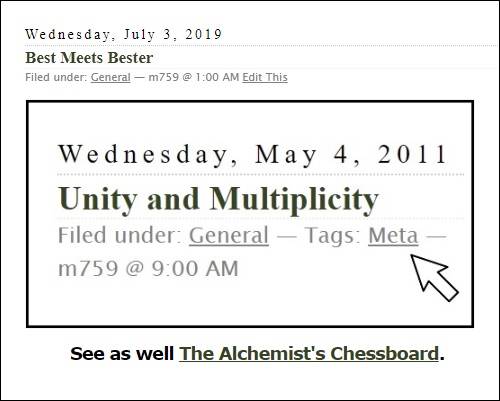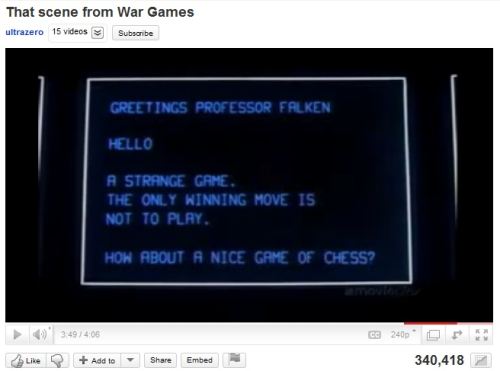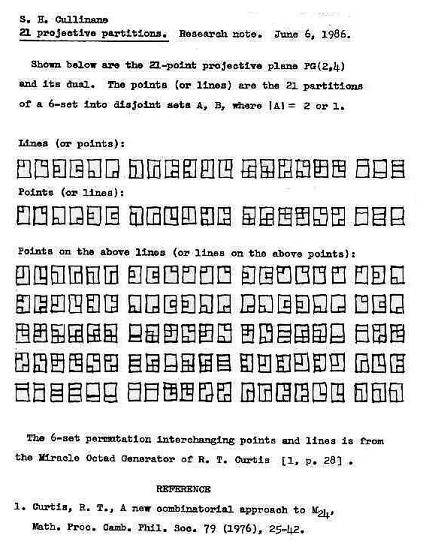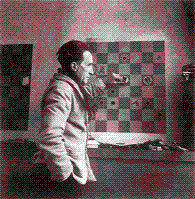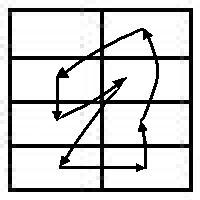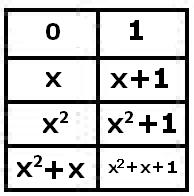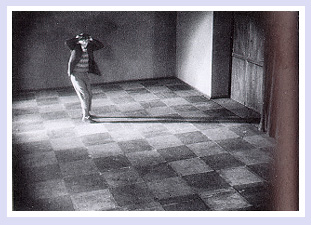In memory of a Chess Records star who died on March 18, 2017 —
Monday, August 14, 2017
Chess Records
Thursday, April 21, 2016
The Alchemist’s Chessboard
Material related to the previous post and to Alfred Bester's
1981 followup to The Stars My Destination titled The Deceivers —
|
The Lapis Philosophorum :
"The lapis was thought of as a unity and therefore often stands for the prima materia in general."
"Its discoverer was of the opinion that he had produced the equivalent of the primordial protomatter which exploded into the Universe." And from Bester's The Deceivers : Meta Physics "'… Think of a match. You've got a chemical head of potash, antimony, and stuff, full of energy waiting to be released. Friction does it. But when Meta excites and releases energy, it's like a stick of dynamite compared to a match. It's the chess legend for real.' 'I don't know it.' 'Oh, the story goes that a philosopher invented chess for the amusement of an Indian rajah. The king was so delighted that he told the inventor to name his reward and he'd get it, no matter what. The philosopher asked that one grain of rice be placed on the first square of the chessboard, two on the second, four on the third, and so on to the sixty-fourth.' 'That doesn't sound like much.'" Related material : |
Sunday, April 8, 2018
Tuesday, August 27, 2024
For Rubik Worshippers
The above is six-dimensional as an affine space, but only five-dimensional
as a projective space . . . the space PG(5, 2).
As the domain of the smallest model of the Klein correspondence and the
Klein quadric, PG (5,2) is not without mathematical importance.
See Chess Bricks and Ovid.group.
This post was suggested by the date July 6, 2024 in a Warren, PA obituary
and by that date in this journal.
Tuesday, April 23, 2024
Golden Keys
“Chess problems are the
hymn-tunes of mathematics.”
— G. H. Hardy,
A Mathematician’s Apology

|

|

“The key is the cocktail that begins the proceedings.”
– Brian Harley, Mate in Two Moves

"I named this script ocode and chmod 755'd it to make it executable…"
— Software forum post on the OCR program Tesseract
From the author of
The Pearly Gates of Cyberspace:
"Like so many other heroes
who have seen the light
of a higher order…."
Friday, April 12, 2024
The Gambit Plan
Citation — Lattanzio, Ryan (December 7, 2020). "After 'Queen's Gambit,'
Anya Taylor-Joy and Scott Frank Reuniting for Nabokov Adaptation".
IndieWire. — Wikipedia
Thanks for the warning.
See as well Scott Frank on chessboard space.
Friday, December 22, 2023
Wiki’d
Lewis Carroll's chess Red Queen, from Through the Looking Glass,
is "often confused with" the playing cards Queen of Hearts,
from Alice in Wonderland —
" The King turned pale, and shut his notebook hastily.
'Consider your verdict,' he said to the jury in a low, trembling voice….
. . . . 'No, no!' said the Queen. 'Sentence first—verdict afterward.' "
— Lewis Carroll, Alice in Wonderland
|
The figure at right in the video of today's previous post,
"In Alice in Wonderland , the Red Queen
— College of Natural Resources commencement address,
Berck's address was titled "The Red Queen." |
Berck's dies natalis — "birth into heaven," in Catholic parlance —
was reportedly August 10, 2018. A Log24 synchronology check
yields a different chess-related figure … Actor/director John Huston:
Friday, September 15, 2023
For the Players
|
From "Knight to Move," by Fritz Leiber "… You were talking about basic games. Well, the chessboard is clearly a spider’s web with crisscross strands—in Go you even put the pieces on the intersections. The object of the game is to hunt down and immobilize the enemy King, just as a spider paralyzes its victim and sometimes wraps it in its silk. But here’s the clincher: the Knight, the piece most characteristic of chess, has exactly eight crooked moves when it stands in the clear—the number of a spider’s crooked legs, and eyes too! This suggests that all chess-playing planets are Spider-infiltrated from way back. It also suggests that all the chessplayers here for the tournament are Spiders—your shock battalion to take over 61 Cygni 5.” Colonel von Hohenwald sighed. “I was afraid you’d catch on, dear,” he said softly. “Now you’ve signed your abduction warrant at the very least. You may still be able to warn your HQ, but before they can come to your aid, this planet will be in our hands.” He frowned. “But why did you spill this to me, Erica? If you had played dumb—” “I spilled it to you,” she said, “because I wanted you to know that your plot’s been blown––and that my side has already taken countermeasures! We’ve made a crooked Knight’s move too. Has the significance of track games never occurred to you, Colonel? The one-dimensional track, sinuously turning, obviously symbolizes the snake. The pieces are the little bugs and animals the snake has swallowed. As for the dice, well, one of the throws is called Snake Eyes. So be assured that all the k’ta’hra players here are Snakes, ready to counter any Spider grab at 61 Cygni 5.” The Colonel’s mouth almost gaped. |

Sunday, September 10, 2023
Games Theory
|
From "Knight to Move," by Fritz Leiber "… You were talking about basic games. Well, the chessboard is clearly a spider’s web with crisscross strands—in Go you even put the pieces on the intersections. The object of the game is to hunt down and immobilize the enemy King, just as a spider paralyzes its victim and sometimes wraps it in its silk. But here’s the clincher: the Knight, the piece most characteristic of chess, has exactly eight crooked moves when it stands in the clear—the number of a spider’s crooked legs, and eyes too! This suggests that all chess-playing planets are Spider-infiltrated from way back. It also suggests that all the chessplayers here for the tournament are Spiders—your shock battalion to take over 61 Cygni 5.” Colonel von Hohenwald sighed. “I was afraid you’d catch on, dear,” he said softly. “Now you’ve signed your abduction warrant at the very least. You may still be able to warn your HQ, but before they can come to your aid, this planet will be in our hands.” He frowned. “But why did you spill this to me, Erica? If you had played dumb—” “I spilled it to you,” she said, “because I wanted you to know that your plot’s been blown––and that my side has already taken countermeasures! We’ve made a crooked Knight’s move too. Has the significance of track games never occurred to you, Colonel? The one-dimensional track, sinuously turning, obviously symbolizes the snake. The pieces are the little bugs and animals the snake has swallowed. As for the dice, well, one of the throws is called Snake Eyes. So be assured that all the k’ta’hra players here are Snakes, ready to counter any Spider grab at 61 Cygni 5.” The Colonel’s mouth almost gaped. |
Wednesday, June 28, 2023
Saturday, June 3, 2023
Thursday, January 20, 2022
The Solomon Pill
"Howard Solomon was building the pharmaceutical company
Forest Laboratories, not by manufacturing drugs but by
licensing them. In his search for deals in the United States and
Europe, he learned about citalopram, a Danish antidepressant."
— Richard Sandomir, New York Times , Friday, Jan. 14, 2022
" '… he’d talk about Verdi writing "Falstaff" in his 80s,' Andrew Solomon
said. ' "Imagine that," he’d say, "in his 80s, he wrote some of the greatest
music ever written." That was the path he hoped to follow.' ”
Friday, July 2, 2021
Number, Time, and The New Mutants
From Number and Time ,
by Marie-Louise von Franz,
Northwestern U. Press paperback,
December 31, 1974 —
Star Wars Chess:
Originally chess seems to have represented an earthly mirror-image of "the stars' battles in Heaven,"22 an outline of those battles from which man's destiny proceeded. 22. See Joseph Needham, Science and Civilization in China (Cambridge, 1959), III, 540ff., 303ff.; see also IV, pt. 1, 230, 265, 327 ff.
From the recent film The New Mutants —
Anya Taylor-Joy plays in a pool:

"Roll credits."
Saturday, June 26, 2021
Our Viennese Heritage — “Racy”?!
Wednesday, January 20, 2021
Key
An image from the opening of the Netflix series “Locke & Key” —

See also Omega in this journal.
“The key is the cocktail that begins the proceedings.”
– Brian Harley, Mate in Two Moves


Sunday, January 10, 2021
“Glasgow, 1937”
The location in the title is the opening scene of the new version
of "All Creatures Great and Small." The year in the title suggests
a look at (for instance) The Pentagram Papers.
A "support provided by" credit suggests some related images —

A Scotland-related post: The Blue Path and the Red Path
(Log24, Aug. 24, 2014).
Wendelboe's games included chess sets.
See as well a related purchase from further north on the same block.
Tuesday, January 5, 2021
The Shop on the Corner
George Steiner on chess —
"… the common bond between chess, music, and mathematics
may, finally, be the absence of language."
— George Steiner, Fields of Force: Fischer and Spassky at Reykjavik ,
Viking hardcover, June 1974.
In memory of George Steiner, of Walter Tevis, and of B&B Smoke Shop,
corner of Third Ave. and Liberty St., Warren, Pennsylvania, in the 1950s,
where I purchased . . .

At that point in my life, language interested me more than chess.
But I can identify with the protagonist of Walter Tevis's Queen's Gambit ,
(the book, not the film) who visited a similar smoke shop in 1960 —
… There was a long rack of magazines behind her. When she
got the cigarettes, she turned and began looking. Senator
Kennedy’s picture was on the cover of Time and Newsweek :
he was running for President . . . .
. . . Walking home with the folded [chess] magazine tucked
securely against her flat belly she thought again about that
rook move Morphy hadn’t made. The magazine said
Morphy was “perhaps the most brilliant player in the
history of the game.” The rook could come to bishop seven,
and Black had better not take it with his knight because…
She stopped, halfway down the block. A dog was barking
somewhere, and across the street from her on a well-mowed
lawn two small boys were loudly playing tag. After the
second pawn moved to king knight five, then the remaining
rook could slide over, and if the black player took
the pawn, the bishop could uncover, and if he didn’t…
She closed her eyes. If he didn’t capture it, Morphy
could force a mate in two, starting with the bishop sacrificing
itself with a check. If he did take it, the white pawn
moved again, and then the bishop went the other way
and there was nothing Black could do. There it was. One
of the little boys across the street began crying. There was
nothing Black could do. The game would be over in
twenty-nine moves at least. The way it was in the book, it
had taken Paul Morphy thirty-six moves to win. He
hadn’t seen the move with the rook. But she had.
Overhead the sun shone in a blank blue sky. The dog
continued barking. The child wailed. Beth walked slowly
home and replayed the game. Her mind was as lucid as a
perfect, stunning diamond.
***
Wednesday, November 18, 2020
La Chanson Fatale
Harold Edwards, a founding co-editor of The Mathematical Intelligencer ,
reportedly died at 84 on Tuesday, Nov. 10, 2020.
Images from this journal on that date —

"Surprise Party" revisited —

A Philippine meditation by Alex Garland quoted here on May 6, 2010 —
Sunday, July 7, 2019
Wednesday, May 8, 2019
When the Men
In Memoriam . . .
"When the men on the chessboard
get up and tell you where to go …."
"The I Ching encodes the geometry of the fabric of spacetime."
Tuesday, June 12, 2018
Like Decorations in a Cartoon Graveyard
Two visions of happy neurons:
This post was suggested by a link in today's New York Times —
"Simon Denny, the New Zealand artist whose work incorporates
board games, intervenes by introducing his own pieces into an attic of
the late-18th-century Haus zum Kirschgarten, already filled with
'old historical dollhouses, board games, chess games' and the like …."
Tuesday, August 29, 2017
Pakanga
Continued from August 23, 2017. See a death on that date
reported by a funeral home in Monterey, California.
Wednesday, August 23, 2017
Pakanga
("Every Picture Tells a Story," continued from August 15 )
Related material — Laughing-Academy Cartography.
Tuesday, August 15, 2017
Every Picture Tells a Story
Friday, January 27, 2017
In Memory of Actor John Hurt
Hurt, who reportedly died today, played a purveyor
of magic wands in the Harry Potter series and also
Control in “Tinker Tailor Soldier Spy.”
“In the original screenplay for the film adaptation
of Tinker Tailor Soldier Spy, Smiley muses that
Control had once told him that Howard Staunton
was the greatest chess master Britain had ever
produced. ‘Staunton’ later turns out to be the name
that Control used for the rental of his flat.”
— Wikipedia, Control (fictional character)
Related images —
Happy Chinese New Year.
Monday, May 9, 2011
Queen’s Gambit*
From March 9 four years ago—

* See this journal and the novel.
Update of 10 AM May 9—
Midrash for Gnostics —
A post linked to under "this journal" (above) has a brief discussion of theology and Wallace Stevens—
"Professor Eucalyptus in 'Ordinary Evening' XIV, for example, 'seeks/ God in the object itself '…."
I have more confidence that God is to be found in the Ping Pong balls of the New York Lottery.
This suggests a check of yesterday's NY numbers. They were… Midday 780, Evening 302.
A search for 780 in this journal yields a post quoting The Scotsman 's reporter Rhiannon Edward.
Related material:
Rhiannon's Scotsman story of May 6—
Rapist gets 20 years after justice system finally believes his victims
See also this journal on May 7 —

For yesterday's NY evening 302, see the "780" post involving Rhiannon—
Glenn Ford as a playboy from Argentina —

— and "302" interpreted as "3/02," which yields…
"Yo sé de un laberinto griego que es una línea única, recta."
—Borges, "La Muerte y la Brújula"
"I know of one Greek labyrinth which is a single straight line."
—Borges, "Death and the Compass"
For some background music, click here.
Thursday, January 6, 2011
Saturday, February 13, 2010
Entertainment continued
“Logic is all about the entertaining of possibilities.”
– Colin McGinn, Mindsight: Image, Dream, Meaning,
Harvard University Press, 2004
Geometry of Language,
continued from St. George's Day, 2009—

Related material:
Prima Materia,
The Galois Quaternion,
and The Wake of Imagination.
See also the following from a physicist
(not of the most orthodox sort, but his remarks
here on Heisenberg seem quite respectable)–
Friday, September 4, 2009
Friday September 4, 2009
Continued from Monday
“This is a chapel
of mischance;
ill luck betide it, ’tis
the cursedest kirk
that ever I came in!”
Philip Kennicott on
Kirk Varnedoe in
The Washington Post:
“Varnedoe’s lectures were
ultimately about faith,
about his faith in
the power of abstraction,
and abstraction as a kind of
anti-religious faith in itself….”
Kennicott’s remarks were
on Sunday, May 18, 2003.
They were subtitled
“Closing the Circle
on Abstract Art.”
Also on Sunday, May 18, 2003:
“Will the circle be unbroken?
As if some southern congregation
is praying we will come to understand.”
Princeton University Press:
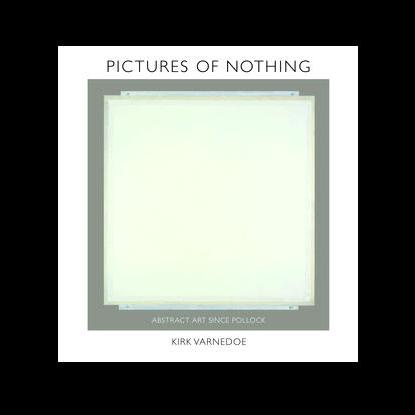
See also
Parmiggiani’s
Giordano Bruno —

Dürer’s Melencolia I —

and Log24 entries
of May 19-22, 2009,
ending with
“Steiner System” —

George Steiner on chess
(see yesterday morning):
“Allegoric associations of death with chess are perennial….”
Yes, they are.
April is Math Awareness Month.
This year’s theme is “mathematics and art.”

Cf. both of yesterday’s entries.
Thursday, September 3, 2009
Thursday September 3, 2009
“Music and mathematics are among the pre-eminent wonders of the race. Levi-Strauss sees in the invention of melody ‘a key to the supreme mystery’ of man– a clue, could we but follow it, to the singular structure and genius of the species. The power of mathematics to devise actions for reasons as subtle, witty, manifold as any offered by sensory experience and to move forward in an endless unfolding of self-creating life is one of the strange, deep marks man leaves on the world. Chess, on the other hand, is a game in which thirty-two bits of ivory, horn, wood, metal, or (in stalags) sawdust stuck together with shoe polish, are pushed around on sixty-four alternately coloured squares. To the addict, such a description is blasphemy. The origins of chess are shrouded in mists of controversy, but unquestionably this very ancient, trivial pastime has seemed to many exceptionally intelligent human beings of many races and centuries to constitute a reality, a focus for the emotions, as substantial as, often more substantial than, reality itself. Cards can come to mean the same absolute. But their magnetism is impure. A mania for whist or poker hooks into the obvious, universal magic of money. The financial element in chess, where it exists at all, has always been small or accidental.
To a true chess player, the pushing about of thirty-two counters on 8×8 squares is an end in itself, a whole world next to which that of a mere biological or political or social life seems messy, stale, and contingent. Even the patzer, the wretched amateur who charges out with his knight pawn when the opponent’s bishop decamps to R4, feels this daemonic spell. There are siren moments when quite normal creatures otherwise engaged, men such as Lenin and myself, feel like giving up everything– marriage, mortgages, careers, the Russian Revolution– in order to spend their days and nights moving little carved objects up and down a quadrate board. At the sight of a set, even the tawdriest of plastic pocket sets, one’s fingers arch and a coldness as in a light sleep steals over one’s spine. Not for gain, not for knowledge or reknown, but in some autistic enchantment, pure as one of Bach’s inverted canons or Euler’s formula for polyhedra.”
— George Steiner in “A Death of Kings,” The New Yorker, issue dated September 7, 1968, page 133
“Examples are the stained-glass windows of knowledge.” —Nabokov

Click above images for some context.
Log24 entries of May 30, 2006, as well as “For John Cramer’s daughter Kathryn”– August 27, 2009— and related material at Wikipedia (where Kathryn is known as “Pleasantville”).
Tuesday, July 28, 2009
Tuesday July 28, 2009
21st century: Obama
A headline from 2003,
with an epiphany from
twenty years ago:
The Tables of Time

|
|
In related news:

Wednesday, April 8, 2009
Wednesday April 8, 2009
Good’s Singularity
Irving John “I.J.” Good died Sunday, April 5, 2009.
The date of his death was also Palm Sunday and the day of the Academy of Country Music Awards.
Information from Wikipedia:
Good, 92, was a cryptanalyst at Bletchley Park during World War II.
“He was born as Isidore Jacob Gudak to a Jewish family in London. In his publications he was called I. J. Good. He studied mathematics at Jesus College, Cambridge, graduating in 1938. He did research work under G.H. Hardy and Besicovitch before moving to Bletchley Park in 1941 on completing his doctorate.
At Bletchley Park, he was initially in Hut 8 under the supervision of Alan Turing…”
[Related material: the death of Turing (a major fan of the Evil Queen in Snow White) and yesterday’s entry]
Wikipedia states that “I. J. Good’s vanity car license plate, hinting at his spylike wartime work, was ‘007 IJG’…. He played chess to county standard, and helped to popularise Go, an Asian boardgame, through a 1965 article in New Scientist (he had learned the rules from Turing). In 1965, he described a concept similar to today’s meaning of technological singularity, in that it included in it the advent of superhuman intelligence:
- Let an ultraintelligent machine be defined as a machine that can far surpass all the intellectual activities of any man however clever. Since the design of machines is one of these intellectual activities, an ultraintelligent machine could design even better machines; there would then unquestionably be an ‘intelligence explosion,’ and the intelligence of man would be left far behind. Thus the first ultraintelligent machine is the last invention that man need ever make….
- — Good, I. J. (1965). ‘Speculations Concerning the First Ultraintelligent Machine‘, Advances in Computers, Vol. 6.”
| “Some say the symbol of Apple Computers, the apple with a bite out of it, is a nod to Alan Turing.”– from “Alan Turing and the Apple” at Flickr, uploaded on Epiphany 2006 by guano |

Above: Composite by “guano” at Flickr
Will: Do you like apples?
Clark: Yeah.
Will: Well, I got her number.
How do you like them apples?
Happy Spy Wednesday.
Friday, April 3, 2009
Friday April 3, 2009
“Lord, I remember”
— Bob Seger
“Philosophers ponder the idea of identity: what it is to give something a name on Monday and have it respond to that name on Friday….”
— Bernard Holland in The New York Times of Monday, May 20, 1996
Yesterday’s afternoon entry cited philosopher John Holbo on chess. This, together with Holland’s remark above and Monday’s entries on Zizek, suggests…
(pdf, 11 pages)
In this excellent analysis,
Holbo quotes Kierkegaard:
“… the knight of faith
‘has the pain of being unable to
make himself intelligible to others'”
(Kierkegaard, Fear and Trembling)
Cardinal Manning
Click on the cardinal
for a link to some remarks
related to the upcoming film
“Angels & Demons” and to
a Paris “Sein Feld.”
Context: the five entries
ending at 9:26 AM
on March 10, 2009…
and, for Kierkegaard,
Diamonds Are Forever.
Saturday, March 21, 2009
Saturday March 21, 2009
Counters in Rows
"Music, mathematics, and chess are in vital respects dynamic acts of location. Symbolic counters are arranged in significant rows. Solutions, be they of a discord, of an algebraic equation, or of a positional impasse, are achieved by a regrouping, by a sequential reordering of individual units and unit-clusters (notes, integers, rooks or pawns)."
— George Steiner
(See March 10, "Language Game.")
Friday, January 16, 2009
Friday January 16, 2009
“Philosophers ponder the idea of identity: what it is to give something a name on Monday and have it respond to that name on Friday.”
“I feel very happy to be a part of Mind Champions Academy.”
— A winner at a chess awards ceremony in India on Monday
John Mortimer, who wrote the TV version of Brideshead Revisited, died today. In his memory:
por el lucero puro
que brilla en
la diadema de la Muerte.“

King’s Moves,
adapted from
a figure by
F. Lanier Graham
Related material:
“Will this be
on the test?“
Thursday, January 15, 2009
Thursday January 15, 2009
The New York Times Magazine for next Sunday:
“Weeks before the election of 1960, Norman Mailer, already an accomplished novelist, sat down to write his first major work of political journalism, an essay for Esquire in which he argued that only John F. Kennedy could save America… the only kind of leader who could rescue it, who could sweep in an era of what Mailer called ‘existential’ politics, was a ‘hipster’ hero– someone who welcomed risk and adventure, someone who sought out new experience, both for himself and for the country….
… Mailer essentially created a new genre for a generation of would-be literary philosophers covering politics…. By 1963, Mailer and other idealists were crushed to discover that Kennedy was in fact a fairly conventional and pragmatic politician, more Harvard Yard than Fortress of Solitude.”
“… what I want from the Obama administration is something more than Harvard-to-the-Beltway smarts. I want magical realism.”
Mailer and Cohen, taken together, suggest I should review two authors– Picard and Hesse– I encountered as a Harvard freshman in 1960.
Kennst du den Faust?
MEPHISTOPHELES:
Den Doktor?
DER HERR:
Meinen Knecht!
O.E. cniht “boy, youth, servant,” common W.Gmc. (cf. O.Fris. kniucht, Du. knecht, kneht “boy, youth, lad,” Ger. Knecht “servant, bondsman, vassal”), of unknown origin. Meaning “military follower of a king or other superior” is from c.1100. Began to be used in a specific military sense in Hundred Years War, and gradually rose in importance through M.E. period until it became a rank in the nobility 16c. The verb meaning “to make a knight of (someone)” is from c.1300. Knighthood is O.E. cnihthad M.H.G. “the period between childhood and manhood;” sense of “rank or dignity of a knight” is from c.1300. The chess piece so called from c.1440.
Further background on the word “Knecht”–

(Joseph Knecht’s translation):
“… For although in a certain sense and for light-minded persons non-existent things can be more easily and irresponsibly represented in words than existing things, for the serious and conscientious historian it is just the reverse. Nothing is harder, yet nothing is more necessary, than to speak of certain things whose existence is neither demonstrable nor probable. The very fact that serious and conscientious men treat them as existing things brings them a step closer to existence and to the possibility of being born.”
Tuesday, January 13, 2009
Tuesday January 13, 2009
Something Traditional —
“German Chancellor Dr. Angela Merkel is the Charlemagne Prize laureate of 2008…. The prize will be awarded on 1 May, Ascension Day.”
Something Modern —
Previously undescribed in this journal:

| A NOTE BY THE DESIGNER
“The traditional chess set, with its naturalistic images of medieval armies, suggests a game between combatants who enjoy the winning of battles. This chess set, with its articulated images of abstract force, suggests a game between contestants who enjoy the process of thinking.
The primary principle of this design… is that the operating reality or function of each piece– both its value and how it moves– is embodied in a simple self-expressive form….  Design Copyright F. Lanier Graham 1967
— F. Lanier Graham, 1967 |
Related material: this journal on the First of May, 2008, the date of last year’s Charlemagne award.
Sunday, October 5, 2008
Sunday October 5, 2008
Last night's entry presented a
short story summarized by
four lottery numbers.
Today's mid-day lotteries
and associated material:
Pennsylvania, 201– i.e., 2/01:
Kindergarten Theology —
"In a game of chess, the knight's move is unique because it alone goes around corners. In this way, it combines the continuity of a set sequence with the discontinuity of an unpredictable turn in the middle. This meaningful combination of continuity and discontinuity in an otherwise linear set of possibilities has led some to refer to the creative act of discovery in any field of research as a 'knight's move' in intelligence."
I Have a Dreamtime —
"One must join forces with friends of like mind"
Related material:
"Schizophrenia is not a psychological disorder peculiar to human beings. Schizophrenia is not a disease at all but rather a localized traveling discontinuity of the space time matrix itself. It is like a travelling whirl-wind of radical understanding that haunts time. It haunts time in the same way that Alfred North Whitehead said that the color dove grey 'haunts time like a ghost.'"
"'Knight's move thinking' is a psychiatric term describing a thought disorder where in speech the usual logical sequence of ideas is lost, the sufferer jumping from one idea to another with no apparent connection. It is most commonly found in schizophrenia."
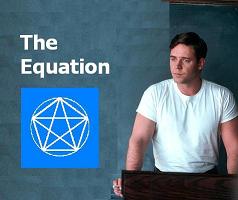
I know more than Apollo,
For oft when he lies sleeping
I see the stars at mortal wars
In the wounded welkin weeping.
For more on the sleep of Apollo,
see the front page of today's
New York Times Book Review.
Garrison Keillor's piece there,
"Dying of the Light," is
about the fear of death felt
by an agnostic British twit.
For relevant remarks by
a British non-twit, see
William Dunbar–
Friday, February 1, 2008
Friday February 1, 2008
On the late James Edwin Loder,
a Presbyterian minister and
a professor of Christian education
at Princeton Theological Seminary,
co-author of The Knight’s Move (1992):
For a related story about
knight moves and kindergarten,
see Knight Moves: The Relativity
Theory of Kindergarten Blocks,
and Log24, Jan. 16, 17, and 18.
See also Loder’s book
(poorly written, but of some
interest in light of the above):

“In a game of chess, the knight’s move is unique because it alone goes around corners. In this way, it combines the continuity of a set sequence with the discontinuity of an unpredictable turn in the middle. This meaningful combination of continuity and discontinuity in an otherwise linear set of possibilities has led some to refer to the creative act of discovery in any field of research as a ‘knight’s move’ in intelligence.
— James E. Loder and W. Jim Neidhardt (Helmers & Howard Publishing, 1992)
For a discussion, see Triplett’s
“Thinking Critically as a Christian.”
Many would deny that such
a thing is possible; let them
read the works of T. S. Eliot.
Related material:
The Knight’s Move
discusses (badly) Hofstadter’s
“strange loop” concept; see
Not Mathematics but Theology
(Log24, July 12, 2007).
Saturday, January 19, 2008
Saturday January 19, 2008
Bobby Fischer
Edward Rothstein has a piece on Bobby Fischer in today’s New York Times. The Rothstein opening:
“There may be only three human activities in which miraculous accomplishment is possible before adulthood: mathematics, music and chess.”
This echoes the opening of a classic George Steiner essay (The New Yorker, Sept. 7, 1968):
“There are three intellectual pursuits, and, so far as I am aware, only three, in which human beings have performed major feats before the age of puberty. They are music, mathematics, and chess.”
— “A Death of Kings,” reprinted in George Steiner: A Reader, Oxford University Press, 1984, pp. 171-178.
Despite its promising (if unoriginal) opening, the New York Times piece is mainly an attack on Fischer’s anti-Jewish stance. Rothstein actually has little of interest to say about what he calls the “glass-bead games” of music, mathematics, and chess. For a better-written piece on chess and madness, see Charles Krauthammer’s 2005 essay in TIME. The feuilletons of Rothstein and Krauthammer do not, of course, come close to the genuinely bead-game-like writing of Steiner.
Related material on
chess and religion:
Magical Thinking
(December 7th, 2005)
Saturday, July 14, 2007
Saturday July 14, 2007
Catholic University
of America
The August 2007 issue of Notices of the American Mathematical Society contains tributes to the admirable personal qualities and mathematical work of the late Harvard professor George Mackey. For my own tributes, see Log24 on March 17, 2006, April 29, 2006, and March 10, 2007. For an entry critical of Mackey’s reductionism– a philosophical, not mathematical, error– see Log24 on May 23, 2007 (“Devil in the Details”).
Here is another attack on reductionism, from a discussion of the work of another first-rate mathematician, the late Gian-Carlo Rota of MIT:
“Another theme developed by Rota is that of ‘Fundierung.’ He shows that throughout our experience we encounter things that exist only as founded upon other things: a checkmate is founded upon moving certain pieces of chess, which in turn are founded upon certain pieces of wood or plastic. An insult is founded upon certain words being spoken, an act of generosity is founded upon something’s being handed over. In perception, for example, the evidence that occurs to us goes beyond the physical impact on our sensory organs even though it is founded upon it; what we see is far more than meets the eye. Rota gives striking examples to bring out this relationship of founding, which he takes as a logical relationship, containing all the force of logical necessity. His point is strongly antireductionist. Reductionism is the inclination to see as ‘real’ only the foundation, the substrate of things (the piece of wood in chess, the physical exchange in a social phenomenon, and especially the brain as founding the mind) and to deny the true existence of that which is founded. Rota’s arguments against reductionism, along with his colorful examples, are a marvelous philosophical therapy for the debilitating illness of reductionism that so pervades our culture and our educational systems, leading us to deny things we all know to be true, such as the reality of choice, of intelligence, of emotive insight, and spiritual understanding. He shows that ontological reductionism and the prejudice for axiomatic systems are both escapes from reality, attempts to substitute something automatic, manageable, and packaged, something coercive, in place of the human situation, which we all acknowledge by the way we live, even as we deny it in our theories.”
— Robert Sokolowski, foreword to Rota’s Indiscrete Thoughts
 Fr. Robert Sokolowski, Ph.D., is Professor of Philosophy at The Catholic University of America in Washington, D.C. Ordained a Roman Catholic priest in 1962, he is internationally recognized and honored for his work in philosophy, particularly phenomenology. In 1994, Catholic University sponsored a conference on his work and published several papers and other essays under the title, The Truthful and the Good, Essays In Honor of Robert Sokolowski. |
The tributes to Mackey are contained in the first of two feature articles in the August 2007 AMS Notices. The second feature article is a review of a new book by Douglas Hofstadter. For some remarks related to that article, see Thursday’s Log24 entry “Not Mathematics but Theology.”
Wednesday, June 6, 2007
Wednesday June 6, 2007
June 7 in New Zealand.
Today at Cullinane College:
Examination Day

(For the college curriculum,
see the New Zealand
Qualifications Authority.)
If Cullinane College were Hogwarts–
Last-minute exam info:
The Lapis Philosophorum
"The lapis was thought of as a unity and therefore often stands for the prima materia in general."
— Aion, by C. G. Jung"Its discoverer was of the opinion that he had produced the equivalent of the primordial protomatter which exploded into the Universe."
— The Stars My Destination, by Alfred Bester
And from Bester's The Deceivers:
Meta Physics
"'… Think of a match. You've got a chemical head of potash, antimony, and stuff, full of energy waiting to be released. Friction does it. But when Meta excites and releases energy, it's like a stick of dynamite compared to a match. It's the chess legend for real.'
'I don't know it.'
'Oh, the story goes that a philosopher invented chess for the amusement of an Indian rajah. The king was so delighted that he told the inventor to name his reward and he'd get it, no matter what. The philosopher asked that one grain of rice be placed on the first square of the chessboard, two on the second, four on the third, and so on to the sixty-fourth.'
'That doesn't sound like much.'
'So the rajah said. …'"
Related material:
Friday, April 20, 2007
Friday April 20, 2007
Part I
|
The Library of Congress “American sculptor Daniel Chester French was born in Exeter, New Hampshire on April 20, 1850. His colossal seated figure of Abraham Lincoln presides over the Lincoln Memorial. Reared in Cambridge and Concord, Massachusetts, he was embraced by members of the Transcendentalist community including Ralph Waldo Emerson. Author and fellow Concord resident Louisa May Alcott encouraged young French to pursue a career as an artist. Louisa’s sister, artist May Alcott, was his early teacher. French studied in Boston and New York prior to receiving his first commission for the 1875 statue The Minute Man. Standing near the North Bridge in Concord, in the Minute Man National Historical Park, this work commemorates events at the North Bridge, the site of ‘the shot heard ’round the world.’ An American icon, images derivative of The Minute Man statue appeared on defense bonds, stamps, and posters during World War II.” |
 |
Log24 on the anniversary of
Lincoln’s assassination —
|
Saturday, April 14, 2007 4:30 AM The Sun Also Sets, or… This Way to
the Egress Continued from April 12: “I have only come here
— Robert Stone, |
Log24 entry of
November 7, 2003 —
 |
— and a
student play from
Virginia Tech:

Part V:
Symmetry
for Beavis and Butt-Head
and
The Rhetoric of Scientism:
It’s a very ancient saying,
But a true and honest thought,
That if you become a teacher,
By your pupils you’ll be taught.
— Oscar Hammerstein,
“Getting to Know You”
Saturday, March 10, 2007
Saturday March 10, 2007
The Logic of Dreams
From A Beautiful Mind–
“How could you,” began Mackey, “how could you, a mathematician, a man devoted to reason and logical proof…how could you believe that extraterrestrials are sending you messages? How could you believe that you are being recruited by aliens from outer space to save the world? How could you…?”
Nash looked up at last and fixed Mackey with an unblinking stare as cool and dispassionate as that of any bird or snake. “Because,” Nash said slowly in his soft, reasonable southern drawl, as if talking to himself, “the ideas I had about supernatural beings came to me the same way that my mathematical ideas did. So I took them seriously.”
Ideas:

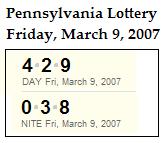
A link in the 7/11 entry leads to a remark of Noel Gray on Plato’s Meno and “graphic austerity as the tool to bring to the surface, literally and figuratively, the inherent presence of geometry in the mind of the slave.”
Also Friday: an example of graphic austerity– indeed, Gray graphic austerity– in Log24:

(Related material: the Harvard Gazette of April 6, 2006, “Mathematician George W. Mackey, 90: Obituary“– “A memorial service will be held at Harvard’s Memorial Church on April 29 at 2 p.m.“)
Friday’s Pennsylvania evening number 038 tells two other parts of the story involving Mackey…
As Mackey himself might hope, the number may be regarded as a reference to the 38 impressive pages of Varadarajan’s “Mackey Memorial Lecture” (pdf).
More in the spirit of Nash, 38 may also be taken as a reference to Harvard’s old postal address, Cambridge 38, and to the year, 1938, that Mackey entered graduate study at Harvard, having completed his undergraduate studies at what is now Rice University.
Returning to the concept of graphic austerity, we may further simplify the already abstract chessboard figure above to obtain an illustration that has been called both “the field of reason” and “the Garden of Apollo” by an architect, John Outram, discussing his work at Mackey’s undergraduate alma mater:

Let us hope that Mackey,
a devotee of reason,
is now enjoying the company
of Apollo rather than that of
Tom O’Bedlam:

For John Nash on his birthday:
I know more than Apollo,
For oft when he lies sleeping
I see the stars at mortal wars
In the wounded welkin weeping.
Wednesday, March 7, 2007
Wednesday March 7, 2007
of Time:
8:24:48
AM EST
Related material–
Symbols:

and
“The False Artaxerxes:
Borges and the
Dream of Chess“
This entry was inspired by
Xanga footprints yesterday
from Virginia:
| 1. Virginia Weblog ART WARS: Time and the Grid |
3/6/2007 9:48 AM |
| 2. Virginia Weblog Sequel |
3/6/2007 11:38 AM |
| 3. Virginia Weblog Games and Truth |
3/6/2007 1:25 PM |
| 4. Virginia /item.aspx?user=m759&ta… The Transcendent Signified |
3/6/2007 5:15 PM |
| 5. Virginia /item.aspx?user=m759&ta… Zen and Language Games |
3/6/2007 5:16 PM |
| 6. Virginia /item.aspx?user=m759&ta… Balanchine’s Birthday |
3/6/2007 6:12 PM |
| 7. Virginia /item.aspx?user=m759&ta… The Agony and the Ya-Ya |
3/6/2007 6:12 PM |
| 8. Virginia /item.aspx?user=m759&ta… Directions Out |
3/6/2007 6:13 PM |
| 9. Virginia /item.aspx?user=m759&ta… The Four Last Things |
3/6/2007 6:13 PM |
Thursday, January 4, 2007
Thursday January 4, 2007
Readings for wise men
on the date of
T. S. Eliot's death:
"A cold coming we had of it…."
"… a Church is to be judged by its intellectual fruits, by its influence on the sensibility of the most sensitive and on the intellect of the most intelligent, and it must be made real to the eye by monuments of artistic merit."
— T. S. Eliot, For Lancelot Andrewes: Essays on Style and Order, published by Faber & Gwyer, London, in 1928.
The visual "monuments of artistic merit" I prefer are not those of a Church– except, perhaps, the Church of Modernism. Literary monuments are another matter. I recommend:
The Novels of Charles Williams, and
on style and order:
Eliot's essay on Andrewes begins,
"The Right Reverend Father in God,
Lancelot Bishop of Winchester,
died on September 25, 1626."
For evidence of Andrewes's
saintliness (hence, that
of Eliot) we may examine
various events of the
25th of September.
In Log24,
these events are…

Aloha.

It seems that I am
somewhat out of step with
the Anglican Communion…
though perhaps, in a sense,
in step with Eliot.
Note his words in
"Journey of the Magi":
Birth or Death? There was a Birth, certainly, We had evidence and no doubt. I had seen birth and death, But had thought they were different; this Birth was Hard and bitter agony for us, like Death, our death.
See also entries for
Dec. 27, 2006 (the day of
Itche Goldberg's death) —
— "Least Popular
Christmas Present
Revisited" —
and for the same date
three years earlier —
"If you don't play
some people's game, they say
that you have 'lost your marbles,'
not recognizing that,

while Chinese checkers
is indeed a fine pastime,
a person may also play dominoes,
chess, strip poker, tiddlywinks,
drop-the-soap or Russian roulette
with his brain.
One brain game that is widely,
if poorly, played is a gimmick
called 'rational
Sunday, September 10, 2006
Sunday September 10, 2006
And the
"Meet Max Black"
Award goes to…
"For the Aeron and other designs,
Mr. Stumpf won this year’s
National Design Award
in Product Design,
which is to be presented
posthumously on Oct. 18
by the Cooper-Hewitt
National Design Museum
in Manhattan."
— Today's New York Times
Stumpf died on August 30,
the date of the Log24 entry
"The Seventh Symbol."
Related material:
From
Geometry of the I Ching,
a chessboard:

From the
National Design Museum:
From Log24 on the
date of Stumpf's death,
Pictorial version of
Hexagram 20,
Contemplation (View)
See also
Fearful Symmetry
and
Symmetry Framed.
Monday, July 3, 2006
Monday July 3, 2006
Culture War
The New York Times, August 6, 2003,
on its executive editor Bill Keller:
“‘It is past time for our magnificent coverage of culture and lifestyles, so essential to our present allure and to our future growth, to get the kind of attention we routinely bestow on hard news,’ Mr. Keller wrote in an e-mail message to the staff.”
The New York Times, June 25, 2006,
on art in Mexico:
“At the Hilario Galguera gallery, newly opened in a fortresslike, century-old building, was Damien Hirst’s gory new series ‘The Death of God– Towards a Better Understanding of Life Without God Aboard the Ship of Fools.’ He conceived the work at his part-time home in the Mexican surf town Troncones.”
Raymond Chandler in The Big Sleep:
“I went over to a floor lamp and pulled the switch, went back to put off the ceiling light, and went across the room again to the chessboard on a card table under the lamp. There was a problem laid out on the board, a six-mover. I couldn’t solve it, like a lot of my problems. I reached down and moved a knight, then pulled my hat and coat off and threw them somewhere. All this time the soft giggling went on from the bed, that sound that made me think of rats behind a wainscoting in an old house.
…………I looked down at the chessboard. The move with the knight was wrong. I put it back where I had moved it from. Knights had no meaning in this game. It wasn’t a game for knights.”
Wednesday, December 7, 2005
Wednesday December 7, 2005
(continued)
1:00:19 EST
The Lion, the Witch
and the Wardrobe
premieres tonight at
the Royal Albert Hall.
Hexagram 19 in the
Cullinane series:
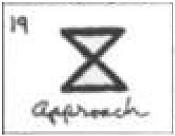

— Katherine Neville, The Eight
|
“What does this have to do with why we’re here?”
“I saw it in a chess book Mordecai showed me. The most ancient chess service ever discovered was found at the palace of King Minos on Crete– the place where the famous Labyrinth was built, named after this sacred axe. The chess service dates to 2000 B.C. It was made of gold and silver and jewels…. And in the center was carved a labrys.” … “But I thought chess wasn’t even invented until six or seven hundred A.D.,” I added. “They always say it came from Persia or India. How could this Minoan chess service be so old?” “Mordecai’s written a lot himself on the history of chess,” said Lily…. “He thinks that chess set in Crete was designed by the same guy who built the Labyrinth– the sculptor Daedalus….” Now things were beginning to click into place…. “Why was this axe carved on the chessboard?” I asked Lily, knowing the answer in my heart before she spoke. “What did Mordecai say was the connection?”…. “That’s what it’s all about,” she said quietly. “To kill the King.” The sacred axe was used to kill the King. The ritual had been the same since the beginning of time. The game of chess was merely a reenactment. Why hadn’t I recognized it before? |
|
“But what does it all mean?” asked Susan when they were somewhat calmer. “It means,” said Aslan, “that though the Witch knew the Deep Magic, there is a magic deeper still which she did not know. Her knowledge goes back only to the dawn of Time. But if she could have looked a little further back, into the stillness and the darkness before Time dawned, she would have read there a different incantation. She would have known that when a willing victim who had committed no treachery was killed in a traitor’s stead, the Table would crack and Death itself would start working backward.” |
Wednesday, November 30, 2005
Wednesday November 30, 2005
Hobgoblin?
Brian Davies is a professor of mathematics at King’s College London. In the December Notices of the American Mathematical Society, he claims that arithmetic may, for all we know, be inconsistent:
Platonistically-inclined mathematicians would deny the possibility that Peano arithmetic could be flawed. From Kronecker onwards many consider that they have a direct insight into the natural numbers, which guarantees their existence. If the natural numbers exist and Peano’s axioms describe properties that they possess then, since the axioms can be instantiated, they must be consistent.”
“It is not possible to prove that Peano arithmetic is consistent”…?!
Where did Gödel say this? Gödel proved, in fact, according to a well-known mathematician at Princeton, that (letting PA stand for Peano Arithmetic),
— Edward Nelson,
Mathematics and Faith (pdf)
Remarkably, even after he has stated correctly Gödel’s result, Nelson, like Davies, concludes that
I prefer the argument that the existence of a model ensures the consistency of a theory.
For instance, the Toronto philosopher William Seager writes that
The relationship between consistency and the existence of a model is brought home by the following weblog entry that neatly summarizes a fallacious argument offered in the AMS Notices by Davies:
Consider the following list A1 of axioms.
(1) There is a natural number 0.
(2) Every natural number a has a successor, denoted by S(a).
(3) There is no natural number whose successor is 0.
(4) Distinct natural numbers have distinct successors: a = b if and only if S(a) = S(b).
(5) If a property is possessed by 0 and also by the successor of every natural number which possesses it, then it is possessed by all the natural numbers.
Now consider the following list A2 of axioms.
(1) G is a set of elements and these elements obey the group axioms.
(2) G is finite but not isomorphic to any known list of finite simple groups.
(3) G is simple, in other words, if N is a subset of G satisfying certain properties then N=G.
We can roughly compare A2 with A1. The second axiom in A2 can be thought of as analogous to the third axiom of A1. Also the third axiom of A2 is analogous to the fifth axiom of A1, insofar as it refers to an unspecified set with cetain properties and concludes that it is equal to G.
Now, as is generally believed by most group theorists, the system A2 is internally inconsistent and the proof its inconsistency runs for more than 10000 pages.
So who is to deny that the system A1 is also probably internally inconsistent! Particularly since Godel proved that you can not prove it is consistent (staying inside the system). May be the shortest proof of its inconsistency is one hundred million pages long!
— Posted by Krishna,
11/29/2005 11:46:00 PM,
at his weblog,
“Quasi-Coherent Ruminations”
An important difference between A1 (the set of axioms of Peano arithmetic) and A2 (a set of axioms that describe a new, unknown, finite simple group) is that A1 is known to have a model (the nonnegative integers) and A2 is not known to have a model.
Therefore, according to Seager’s argument, A1 is consistent and A2 may or may not be consistent.
The degree to which Seager’s argument invokes Platonic realism is debatable. Less debatable is the quasireligious faith in nominalism proclaimed by Davies and Nelson. Nelson’s own account of a religious experience in 1976 at Toronto is instructive.
— Edward Nelson,
Mathematics and Faith (pdf)
Nelson’s “Mathematics and Faith” was written for the Jubilee for Men and Women from the World of Learning held at the Vatican, 23-24 May 2000. It concludes with an invocation of St. Paul:
— Edward Nelson,
Mathematics and Faith (pdf)
Belief in the consistency of arithmetic may or may not be foolish, and therefore an Emersonian hobgoblin of little minds, but bullshit is bullshit, whether in London, in Princeton, in Toronto, or in Rome.
Saturday, October 15, 2005
Saturday October 15, 2005
Canon
A brief note to place Edward Bennett Marks, who died either on Saturday, October 8, 2005 (Washington Post), or on Monday, October 10, 2005 (New York Times), in my personal canon of saints. Today’s New York Times says that Marks spent his career “aiding refugees as an executive of American and international agencies, both official and volunteer.” This alone was commendable, but not miraculous. The miraculous is contained in three words from the Log24 entry of October 10, the date of death of Orson Welles, of Yul Brynner, and perhaps of Marks: “All come home.”
For a rather different perspective on St. Yul Brynner, see “Shall We Dance?”– a profile by Calvin Tomkins in this week’s New Yorker (issue dated 2005 10/17, posted 10/10) of an artist raised in Bangkok. It is perhaps not irrelevant that the chess enthusiast Marcel Duchamp plays a prominent role in this piece.
Some other remarks on chess and art:
| From Introduction to Aesthetics (Log24, October 10, 2004) — G. H. Hardy on chess problems: “It is essential… (unless the problem is too simple to be really amusing) that the key-move should be followed by a good many variations, each requiring its own individual answer.”
According to the New York Times, Marks died on Oct. 10 (see related entry). According to the Washington Post, Marks died on Oct. 8 (see related entry). |
For some remarks on art by St. Edward, see UN Chronicle, Issue 4, 1998.
Friday, April 15, 2005
Friday April 15, 2005
In memory of Leonardo and of Chen Yifei (previous entry), a link to the Sino-Judaic Institute’s review of Chen’s film “Escape to
Saturday, December 27, 2003 10:21 PM
Toy
“If little else, the brain is an educational toy. While it may be a frustrating plaything — one whose finer points recede just when you think you are mastering them — it is nonetheless perpetually fascinating, frequently surprising, occasionally rewarding, and it comes already assembled; you don’t have to put it together on Christmas morning.
The problem with possessing such an engaging toy is that other people want to play with it, too. Sometimes they’d rather play with yours than theirs. Or they object if you play with yours in a different manner from the way they play with theirs. The result is, a few games out of a toy department of possibilities are universally and endlessly repeated. If you don’t play some people’s game, they say that you have ‘lost your marbles,’ not recognizing that,

while Chinese checkers is indeed a fine pastime, a person may also play dominoes, chess, strip poker, tiddlywinks, drop-the-soap or Russian roulette with his brain.
One brain game that is widely, if poorly, played is a gimmick called ‘rational
“I took the number twenty-four and there’s twenty-four ways of expressing the numbers one, two, three, four. And I assigned one kind of line to one, one to two, one to three, and one to four. One was a vertical line, two was a horizontal line, three was diagonal left to right, and four was diagonal right to left. These are the basic kind of directions that lines can take…. the absolute ways that lines can be drawn. And I drew these things as parallel lines very close to one another in boxes. And then there was a system of changing them so that within twenty-four pages there were different arrangements of actually sixteen squares, four sets of four. Everything was based on four. So this was kind of a… more of a… less of a rational… I mean, it gets into the whole idea of methodology.”
Yes, it does.
See Art Wars, Poetry’s Bones, and Time Fold.
Friday, December 26, 2003 7:59 PM
ART WARS, St. Stephen’s Day:
The Magdalene Code
Got The Da Vinci Code for Xmas.
From page 262:
When Langdon had first seen The Little Mermaid, he had actually gasped aloud when he noticed that the painting in Ariel’s underwater home was none other than seventeenth-century artist Georges de la Tour’s The Penitent Magdalene — a famous homage to the banished Mary Magdalene — fitting decor considering the movie turned out to be a ninety-minute collage of blatant symbolic references to the lost sanctity of Isis, Eve, Pisces the fish goddess, and, repeatedly, Mary Magdalene.
Related Log24 material —
The Da Vinci Code, pages 445-446:
“The blade and chalice?” Marie asked. “What exactly do they look like?”
Langdon sensed she was toying with him, but he played along, quickly describing the symbols.
A look of vague recollection crossed her face. “Ah, yes, of course. The blade represents all that is masculine. I believe it is drawn like this, no?” Using her index finger, she traced a shape on her palm.
“Yes,” Langdon said. Marie had drawn the less common “closed” form of the blade, although Langdon had seen the symbol portrayed both ways.
“And the inverse,” she said, drawing again upon her palm, “is the chalice, which represents the feminine.”
“Correct,” Langdon said….
… Marie turned on the lights and pointed….
“There you are, Mr. Langdon. The blade and chalice.”….
“But that’s the Star of Dav–“
Langdon stopped short, mute with amazement as it dawned on him.
The blade and chalice.
Fused as one.
The Star of David… the perfect union of male and female… Solomon’s Seal… marking the Holy of Holies, where the male and female deities — Yahweh and Shekinah — were thought to dwell.
Related Log24 material —
Star Wars.
Concluding remark of April 15, 2005:
For a more serious approach to portraits of
redheads, see Chen Yifei’s work.

Wednesday, October 13, 2004
Wednesday October 13, 2004
Show Business
according to Fritz Leiber
(Leiber's "Changewar" is my
favorite mythology.)
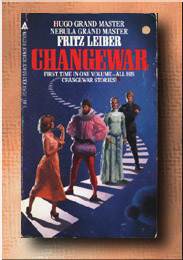
From the Changewar story
"No Great Magic" (1963) Part V:
Even little things are
turning out to be great things
and becoming intensely interesting.
Have you ever thought about
the properties of numbers?
— The Maiden
"I've had this idea– it's just a sort of fancy, remember– that if you wanted to time-travel and, well, do things, you could hardly pick a more practical machine than a dressing-room and a sort of stage and half-theater attached, with actors to man it…."
For the remainder of this section
of Leiber's story, see
Related material:
The previous entry,
The Eight, and
Now We See Wherein
Lies the Pleasure.
Wednesday, January 14, 2004
Wednesday January 14, 2004
Games
On this date —
Alfred Tarski was born
in 1902 in Warsaw, and
Kurt Friedrich Gödel died
in 1978 in Princeton.
From last year’s entry on this date:
What is Truth?
“What is called ‘losing’ in chess
may constitute winning
in another game.”
— Ludwig Wittgenstein,
Remarks on the
Foundations of Mathematics
(revised edition, MIT Press, 1978)
Friday, January 9, 2004
Friday January 9, 2004
HURRY UP PLEASE
IT’S TIME
— T. S. Eliot,
The Waste Land, II
“A Game of Chess”
|
“Make the white Queen run so fast
|
Jan. 9 obituary of Brian Gibson —
“In 2002 he was executive producer of the film ‘Frida,’ about the artist Frida Kahlo….”
Captured for the Queen
Joan Aiken

Photo by Alex Gotfryd,
circa 1972
Jan. 9 obituary of Joan Aiken —
“Joan Aiken was born in Rye, England, a daughter of the American poet Conrad Aiken….”
“Malcolm Lowry’s Under the Volcano must be, for anyone who loves the English language, a sheer joy.”
“He was never inclined to small talk.”
— Jan. 9 obituary of Steven Edward Dorfman, writer of questions (i.e., answers) for the game show “Jeopardy!”
“What’s the Hellfire Club?”
— Joan Aiken, beginning of the final chapter of The Shadow Guests
Note that Dorfman, Gibson, and Aiken
all died on Sunday, Jan. 4, 2004.
For some related material, see
Saturday, December 27, 2003
Saturday December 27, 2003
Toy
“If little else, the brain is an educational toy. While it may be a frustrating plaything — one whose finer points recede just when you think you are mastering them — it is nonetheless perpetually fascinating, frequently surprising, occasionally rewarding, and it comes already assembled; you don’t have to put it together on Christmas morning.
The problem with possessing such an engaging toy is that other people want to play with it, too. Sometimes they’d rather play with yours than theirs. Or they object if you play with yours in a different manner from the way they play with theirs. The result is, a few games out of a toy department of possibilities are universally and endlessly repeated. If you don’t play some people’s game, they say that you have ‘lost your marbles,’ not recognizing that,

while Chinese checkers is indeed a fine pastime, a person may also play dominoes, chess, strip poker, tiddlywinks, drop-the-soap or Russian roulette with his brain.
One brain game that is widely, if poorly, played is a gimmick called ‘rational
“I took the number twenty-four and there’s twenty-four ways of expressing the numbers one, two, three, four. And I assigned one kind of line to one, one to two, one to three, and one to four. One was a vertical line, two was a horizontal line, three was diagonal left to right, and four was diagonal right to left. These are the basic kind of directions that lines can take…. the absolute ways that lines can be drawn. And I drew these things as parallel lines very close to one another in boxes. And then there was a system of changing them so that within twenty-four pages there were different arrangements of actually sixteen squares, four sets of four. Everything was based on four. So this was kind of a… more of a… less of a rational… I mean, it gets into the whole idea of methodology.”
Yes, it does.
See Art Wars, Poetry’s Bones, and Time Fold.
Thursday, November 13, 2003
Thursday November 13, 2003
The Tables of Time
Implied by previous two entries:
|
“This Jack, joke, poor potsherd, patch, matchwood, immortal diamond, |
|
Is immortal diamond.” |
|
— Gerard Manley Hopkins, |

|
|
Monday, April 28, 2003
Monday April 28, 2003
ART WARS:
Toward Eternity
April is Poetry Month, according to the Academy of American Poets. It is also Mathematics Awareness Month, funded by the National Security Agency; this year's theme is "Mathematics and Art."
Some previous journal entries for this month seem to be summarized by Emily Dickinson's remarks:
"Because I could not stop for Death–
He kindly stopped for me–
The Carriage held but just Ourselves–
And Immortality.
Since then–'tis Centuries–and yet
Feels shorter than the Day
I first surmised the Horses' Heads
Were toward Eternity– "
|
Math Awareness Month April is Math Awareness Month.
|
|
An Offer He Couldn't Refuse Today's birthday: Francis Ford Coppola is 64.
From a note on geometry of April 28, 1985:
|
|
The Eight Today, the fourth day of the fourth month, plays an important part in Katherine Neville's The Eight. Let us honor this work, perhaps the greatest bad novel of the twentieth century, by reflecting on some properties of the number eight. Consider eight rectangular cells arranged in an array of four rows and two columns. Let us label these cells with coordinates, then apply a permutation.
The resulting set of arrows that indicate the movement of cells in a permutation (known as a Singer 7-cycle) outlines rather neatly, in view of the chess theme of The Eight, a knight. This makes as much sense as anything in Neville's fiction, and has the merit of being based on fact. It also, albeit rather crudely, illustrates the "Mathematics and Art" theme of this year's Mathematics Awareness Month. The visual appearance of the "knight" permutation is less important than the fact that it leads to a construction (due to R. T. Curtis) of the Mathieu group M24 (via the Curtis Miracle Octad Generator), which in turn leads logically to the Monster group and to related "moonshine" investigations in the theory of modular functions. See also "Pieces of Eight," by Robert L. Griess. |
Friday, April 4, 2003
Friday April 4, 2003
The Eight
Today, the fourth day of the fourth month, plays an important part in Katherine Neville's The Eight. Let us honor this work, perhaps the greatest bad novel of the twentieth century, by reflecting on some properties of the number eight. Consider eight rectangular cells arranged in an array of four rows and two columns. Let us label these cells with coordinates, then apply a permutation.
|
|
|
|
|
The resulting set of arrows that indicate the movement of cells in a permutation (known as a Singer 7-cycle) outlines rather neatly, in view of the chess theme of The Eight, a knight. This makes as much sense as anything in Neville's fiction, and has the merit of being based on fact. It also, albeit rather crudely, illustrates the "Mathematics and Art" theme of this year's Mathematics Awareness Month. (See the 4:36 PM entry.)
The visual appearance of the "knight" permutation is less important than the fact that it leads to a construction (due to R. T. Curtis) of the Mathieu group M24 (via the Curtis Miracle Octad Generator), which in turn leads logically to the Monster group and to related "moonshine" investigations in the theory of modular functions. See also "Pieces of Eight," by Robert L. Griess.
Tuesday, January 14, 2003
Tuesday January 14, 2003
Remarks on Day 14 of
the Year of Our Lord 2003
On this date —
Alfred Tarski was born in 1902 in Warsaw, and
Kurt Friedrich Gödel died in 1978 in Princeton.
What is Truth?
“What is called ‘losing’ in chess may constitute winning in another game.” ![]()
Cited in “A Note on Wittgenstein’s ‘Notorious Paragraph’ about the Gödel Theorem,” by Juliet Floyd (Boston University) and Hilary Putnam (Harvard University), Journal of Philosophy (November 2000), 45 (11): 624-632.
See also
Juliet Floyd’s “Prose versus proof : Wittgenstein on Gödel, Tarski and truth,” Philosophia Mathematica 3, vol. 9 (2001): 901-928,
and
Juliet Floyd’s “The Rule of the Mathematical: Wittgenstein’s Later Discussions.” PhD Dissertation, Harvard University, 1990. Abstract in Dissertation Abstracts International (June 1991), 51 (12A): 4146-A:
“My thesis aims to defend Wittgenstein from the charges of benighted arrogance traditionally levelled against him.”
Romeo: O, she doth teach
the torches to burn bright!
— “Romeo and Juliet,” Act One, Scene V
![]() Ludwig Wittgenstein, Remarks on the Foundations of Mathematics (revised edition, Cambridge, Mass.: MIT Press, 1978)
Ludwig Wittgenstein, Remarks on the Foundations of Mathematics (revised edition, Cambridge, Mass.: MIT Press, 1978)
Wednesday, January 8, 2003
Wednesday January 8, 2003
In the Labyrinth of Memory
Taking a cue from Danny in the labyrinth of Kubrick's film "The Shining," today I retraced my steps.
My Jan. 6 entry, "Dead Poet in the City of Angels," links to a set of five December 21, 2002, entries. In the last of these, "Irish Lament," is a link to a site appropriate for Maud Gonne's birthday — a discussion of Yeats's "Among School Children."
Those who recall a young woman named Patricia Collinge (Radcliffe '64) might agree that her image is aptly described by Yeats:
Hollow of cheek as though it drank the wind
And took a mess of shadows for its meat
This meditation leads in turn to a Sept. 20, 2002, entry, "Music for Patricias," and a tune familiar to James Joyce, "Finnegan's Wake," the lyrics of which lead back to images in my entries of Dec. 20, 2002, "Last-Minute Shopping," and of Dec. 28, 2002, "Solace from Hell's Kitchen." The latter entry is in memory of George Roy Hill, director of "The Sting," who died Dec. 27, 2002.
The Dec. 28 image from "The Sting" leads us back to more recent events — in particular, to the death of a cinematographer who won an Oscar for picturing Newman and Redford in another film — Conrad L. Hall, who died Saturday, Jan. 4, 2003.
For a 3-minute documentary on Hall's career, click here.
Hall won Oscars for "Butch Cassidy and the Sundance Kid" and "American Beauty," and may win a posthumous Oscar for "Road to Perdition," last year's Irish-American mob saga:
"Tom Hanks plays Angel of Death Michael Sullivan. An orphan 'adopted' by crime boss John Rooney (Paul Newman), Sullivan worships Rooney above his own family. Rooney gave Sullivan a home when he had none. Rooney is the father Sullivan never knew. Too bad Rooney is the
Rock Island
branch of Capone's mob."
In keeping with this Irish connection, here is a set of images.
|
American Beauty |
|
|
A Game of Chess |
I need a photo-opportunity. I want a shot at redemption. Don't want to end up a cartoon In a cartoon graveyard. — Paul Simon |
"Like a chess player, he knows that to win a tournament, it is sometimes wise to offer a draw in a game even when you think you can win it."
— Roger Ebert on Robert Duvall's character in "A Civil Action"
Director Steven Zaillian will take part in a tribute to Conrad L. Hall at the Palm Springs International Film Festival awards ceremony on Jan 11. Hall was the cinematographer for Zaillian's films "A Civil Action" and "Searching for Bobby Fischer."
"A Civil Action" was cast by the Boston firm Collinge/Pickman Casting, named in part for that same Patricia Collinge ("hollow of cheek") mentioned above.
See also "Conrad Hall looks back and forward to a Work in Progress." ("Work in Progress" was for a time the title of Joyce's Finnegans Wake.)
What is the moral of all this remembrance?
An 8-page (paper) journal note I compiled on November 14, 1995 (feast day of St. Lawrence O'Toole, patron saint of Dublin, allegedly born in 1132) supplies an answer in the Catholic tradition that might have satisfied Joyce (to whom 1132 was a rather significant number):
How can you tell there's an Irishman present
at a cockfight?
He enters a duck.
How can you tell a Pole is present?
He bets on the duck.
How can you tell an Italian is present?
The duck wins.
|
Every picture tells a story. |
|
Sunday, September 22, 2002
Sunday September 22, 2002
Force Field of Dreams
Metaphysics and chess in today’s New York Times Magazine:
- From “Must-See Metaphysics,” by Emily Nussbaum:
Joss Whedon, creator of a new TV series —
“I’m a very hard-line, angry atheist” and
“I want to invade people’s dreams.” - From “Check This,” by Wm. Ferguson:
Garry Kasparov on chess —
“When the computer sees forced lines,
it plays like God.”
Putting these quotations together, one is tempted to imagine God having a little game of chess with Whedon, along the lines suggested by C. S. Lewis:
As Lewis tells it the time had come for his “Adversary [as he was wont to speak of the God he had so earnestly sought to avoid] to make His final moves.” (C. S. Lewis, Surprised by Joy, Harcourt, Brace, and World, Inc., 1955, p. 216) Lewis called them “moves” because his life seemed like a chess match in which his pieces were spread all over the board in the most disadvantageous positions. The board was set for a checkmate….
For those who would like to imagine such a game (God vs. Whedon), the following may be helpful.
George Steiner has observed that
The common bond between chess, music, and mathematics may, finally, be the absence of language.
This quotation is apparently from
Fields of Force:
Fischer and Spassky at Reykjavik. by George Steiner, Viking hardcover, June 1974.
George Steiner as quoted in a review of his book Grammars of Creation:
“I put forward the intuition, provisional and qualified, that the ‘language-animal’ we have been since ancient Greece so designated us, is undergoing mutation.”
The phrase “language-animal” is telling. A Google search reveals that it is by no means a common phrase, and that Steiner may have taken it from Heidegger. From another review, by Roger Kimball:
In ”Grammars of Creation,” for example, he tells us that ”the classical and Judaic ideal of man as ‘language animal,’ as uniquely defined by the dignity of speech . . . came to an end in the antilanguage of the death camps.”
This use of the Holocaust not only gives the appearance of establishing one’s credentials as a person of great moral gravity; it also stymies criticism. Who wants to risk the charge of insensitivity by objecting that the Holocaust had nothing to do with the ”ideal of man as ‘language animal’ ”?
Steiner has about as clear an idea of the difference between “classical” and “Judaic” ideals of man as did Michael Dukakis. (See my notes of September 9, 2002.)
Clearly what music, mathematics, and chess have in common is that they are activities based on pure form, not on language. Steiner is correct to that extent. The Greeks had, of course, an extremely strong sense of form, and, indeed, the foremost philosopher of the West, Plato, based his teachings on the notion of Forms. Jews, on the other hand, have based their culture mainly on stories… that is, on language rather than on form. The phrase “language-animal” sounds much more Jewish than Greek. Steiner is himself rather adept at the manipulation of language (and of people by means of language), but, while admiring form-based disciplines, is not particularly adept at them.
I would argue that developing a strong sense of form — of the sort required to, as Lewis would have it, play chess with God — does not require any “mutation,” but merely learning two very powerful non-Jewish approaches to thought and life: the Forms of Plato and the “archetypes” of Jung as exemplified by the 64 hexagrams of the 3,000-year-old Chinese classic, the I Ching.
For a picture of how these 64 Forms, or Hexagrams, might function as a chessboard,
Other relevant links:
“As you read, watch for patterns. Pay special attention to imagery that is geometric…”
and



























